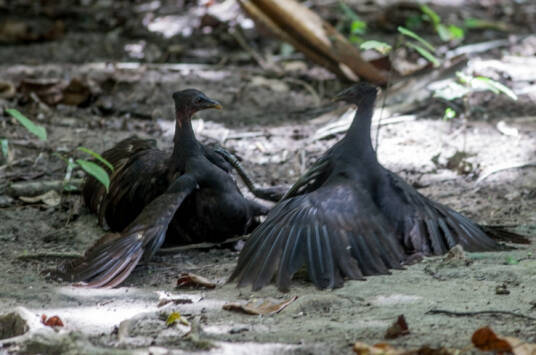Megapodius geelvinkianus
IUCN
LCBasic Information
Scientific classification
- name:Megapodius geelvinkianus
- Scientific Name:Megapodius geelvinkianus,Biak Scrubfowl
- Outline:Landfowl
- Family:P.Genus P.family P.Genus
Vital signs
- length:About 36 cm
- Weight:No textual research information is available
- lifetime:No textual research information is available
Feature
The feathers are mostly dark gray, with a slight crest
Distribution and Habitat
It is found only on the islands of Biak, Mios Korwar, Numfor, Manim and Mios Numin in West Papua, Indonesia.
The natural habitats are subtropical or tropical humid lowland forests and subtropical or tropical humid mountain forests.
Appearance
It's 36 cm longer than the Yakuka. Its feathers are mostly dark gray. There is a slight crest crest, and the face is reddish or blue. The legs are red or dark gray.
Details
Biak Scrubfowl (Megapodius geelvinkianus).

The diet of the megacan is mainly plant flowers, seeds, fruits, etc. The megapod has created a complete brooding system without having to incubate its own eggs directly. Laying eggs near a very hot volcano or uncooled lava; Some go to the beach to incubate their eggs in the sand piles heated by the sun. The eggs need a proper temperature to hatch, but the sand is hot during the day and cold at night. The megapod makes a sand dune on its nest. When it is hot during the day, the male will spread out the dunes and then bury the eggs in the wet, cold sand. When the temperature drops, she immediately removes the wet sand and covers the eggs with warm, dry sand. Some megapods incubate their eggs using the heat from moldy leaves.
Listed on the International Union for Conservation of Nature (IUCN) 2016 Red List of Threatened Species ver 3.1 - Vulnerable (VU).
Protect wild animals and eliminate wild meat.
Maintaining ecological balance is everyone's responsibility!








